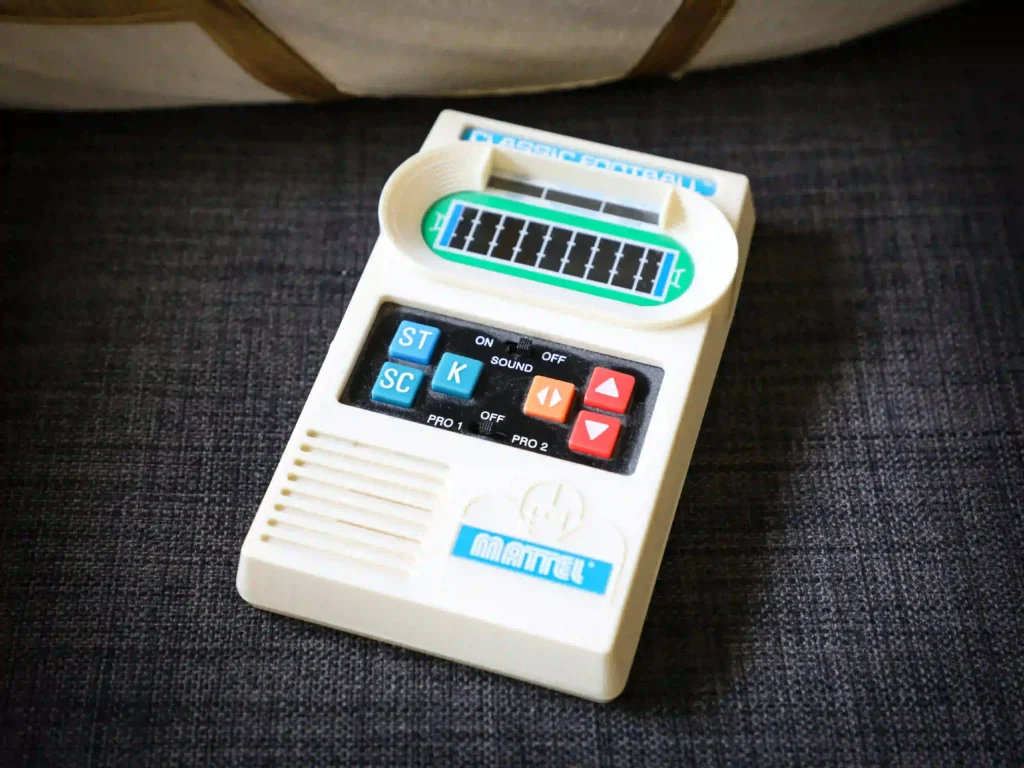Handheld gaming console. It’s our childhood. And now, the new generation is rediscovering them. But what is it that makes these little devices so good? So good, in fact, that they even helped another gaming system win an Emmy. Yeah, seriously.
For the last few years, companies have been reimagining the handheld gaming console. It was practically dead for a while, but after a brief hiatus, it’s back and better than ever. Here’s the thing: we already have giant consoles hooked up to big-screen TVs with amazing picture and surround sound. We’ve got powerhouse PCs where pros chase every millisecond and pixel. So why, in 2025, are people still hyped about Steam Decks, ASUS Alloys, Lenovo Legion Gos, and even whispers of a Microsoft handheld? Is it all just living in Game Boy nostalgia, or is handheld gaming that good?
History of Handheld Gaming Console
Let’s roll back the tape a bit. The handheld gaming journey didn’t start with the Game Boy. It started even earlier, in the 70s, with devices like the Mattel Auto Race, a simple, LED-based gaming device that kicked things off. Then came the Milton Bradley Microvision, the first console with interchangeable cartridges. It wasn’t pretty, but it laid the groundwork.
The big twist came with the Nintendo Game & Watch series. That’s the one that earned Nintendo the Emmy. Not for sales, not for graphics, but for how it fundamentally changed portable gaming. That innovation paved the way for the Game Boy, the real game-changer (pun intended). It was chunky, had a greenish screen, but it packed Tetris and Super Mario Land in your pocket. That was enough to blow minds.
Over time, we saw the rise of the PSP and the DS. The DS had dual screens and touch controls before smartphones even thought about gaming seriously. PSP brought console-level graphics to your hands. It felt like we were really onto something, and for a while, handhelds dominated.
Why handheld really better?
First off, portability on steroids. These things go everywhere. Your backpack. Your jacket. Maybe even your hoodie pocket if it’s big enough. No desk. No chair. No wires. Just hit power and you’re in the game. Doesn’t matter if you’re on a train, in bed, or waiting at the dentist’s office.
Then there’s the price vs. power factor. Want a premium gaming laptop? Get ready to drop $1,000 or more. A high-end console? Around $500, plus a TV. A Steam Deck? Starts at $400, and even the OLED edition lands at $550-ish. For what it offers, that’s a pretty sweet deal.
Performance is another surprise. You’re not going to crank out 240fps in every AAA title, but let’s be honest—you don’t need that when you’re chilling on the couch or lying on the floor. These AMD-powered handhelds run most games beautifully. And because of cloud saves, you can start a game on your desktop, pick it up on your Steam Deck, and keep going without missing a beat.
What makes it even better? Unmatched flexibility. Sit, stand, lie down, it doesn’t matter. You can game however you want. Try doing that while glued to your gaming chair or hunched over a desk.
Plus, these things are designed for real life. With features like quick resume, you can pause mid-game, close the lid, and pick up days later right where you left off. No crashes, no lost progress. Try that with most mobile games and see what happens.
And here’s a fun fact, handheld gaming tech helped another device win a freaking Emmy. Yeah, the Switch’s hybrid design (console and handheld in one) got recognized for innovation in user experience. That says something.
Sweet break from phone
And here’s the spicy bit: it’s better than doomscrolling. In a world where everyone is glued to their phones, mindlessly swiping through reels and posts, handheld consoles offer intentional fun. You’re not stuck in the infinite scroll. You’re engaged. Focused. You’re chasing goals, building cities, racing cars, fighting monsters, and having fun doing it.
Wrapping up
There’s a connection to handheld consoles that goes beyond tech. It’s comfort food for the gamer soul. It reminds people of long car rides with a Game Boy Color, or hidden PSP sessions under the blanket at night. For the younger crowd, it’s discovering a world outside of the phone bubble.
From a business angle, handheld consoles make more sense than ever. They’re selling well. They’re bringing in new fans and old-school players alike. Plus, they tap into a niche that’s surprisingly mainstream: gaming without the commitment. It’s a lifestyle device now, not just a toy.
So, is handheld gaming really that good? Or is it just nostalgia? Honestly, it’s both. Nostalgia may have brought it back, but the experience is what’s keeping it alive.










